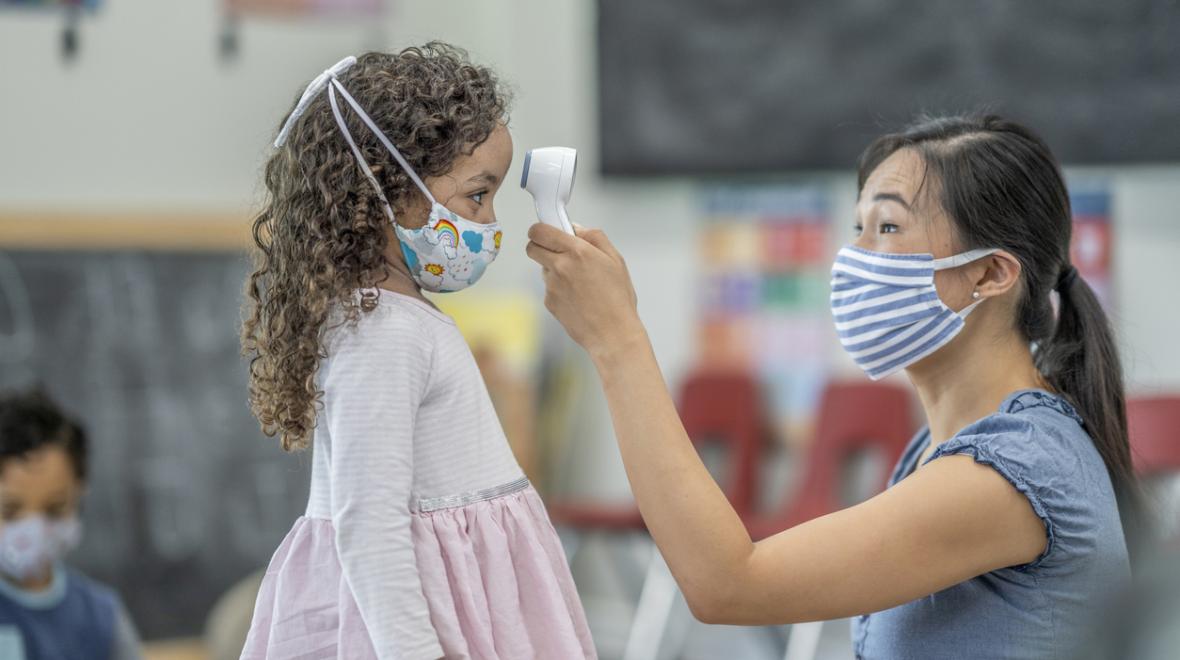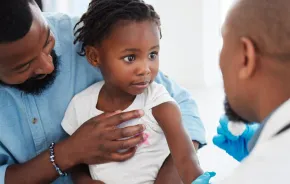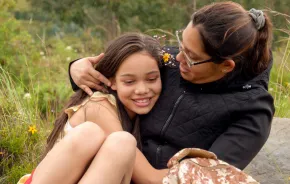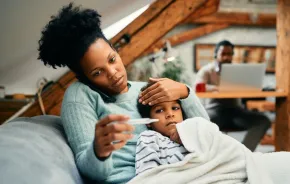
Editor's note: This article was sponsored by Bright Horizons.
Finding child care can be scary in the best of times. When you’re entrusting your small child to someone else’s care, there’s so much to worry about: safety, socialization, learning, even nutrition. Now, a global pandemic has us unsure about what safe, quality child care even looks like.
Kristin Karlson, center director for Bright Horizons’ new Denny Triangle location, has worked in early childhood care for 23 years. During that time, parents have had to deal with a lot of previously unimaginable events. But no crisis has lasted as long or been as all-encompassing as this one. Even so, Karlson says it is possible for child-care centers to operate safely while providing kids the kind of environment they need to stay happy and healthy while learning.
The big question
The obvious first question to ask is “What are your COVID-19 protocols?”
“A good child-care center should have an in-depth set of protocols that it is following consistently for all staff and all families to make sure they are doing the best they can to keep COVID out of the center,” says Karlson. They should be able to share detailed protocols for social distancing, the wearing of masks, hygiene and facility cleaning. These protocols should be consistent with or exceed CDC guidelines and local regulations.
Distancing protocols
Good pandemic protocols start at the door. Daily wellness checks (that screen the entire household, not just the child) should be performed prior to entry. Only teachers and students who pass those checks should be allowed inside. Once inside, treating each classroom as a separate “pod” helps limit the spread if someone in the facility becomes infected. Although true social distancing is not possible with toddlers, teachers can give kids lots of outdoor playtime and encourage them to spread out during classroom activities.
Everyone ages 5 or older should wear a mask at all times. Masks are not recommended for children under the age of 2, but teachers should be supportive of families who want their preschoolers to wear masks.
“We want them to get used to seeing masks, get used to wearing them. But we don’t want to make it a stressful, anxiety-inducing thing for them,” says Karlson.
Hygiene
Cleanliness is always a high priority for child-care centers. New protocols should require more frequent cleaning, emphasizing shared toys and high-touch surfaces. Teachers and students should be washing hands throughout the day. If they weren’t already doing so, teachers should supervise children, even older ones, to make sure they are washing well.
Modified curriculum
Unfortunately, pandemic safety is not completely compatible with an ideal day-care experience. Before the pandemic, many parents helped their kids settle into the classroom each day. Now, they must say goodbye at the door to limit the number of people in the building. Water play and hard-to-clean toys have been abandoned for now. Many day-care centers used to serve family-style meals to help build community and teach children table manners. Now, separate seating and individual servings are the rule.
“Having a bunch of 3-year-olds pass a bowl of food around is not really the best idea at this point in time,” Karlson laughs.
But these changes don’t have to mean a loss for children.
“There are still so many imaginative ways that we can help children with those few things that they have had to pull back on in the classroom for safety reasons. Teachers are still planning fun and engaging activities for the children, who are still enjoying learning and playing in the classroom,” says Karlson.
Changing guidelines
Guidelines are constantly changing as the science advances and infection rates fluctuate. Parents who are looking for child care should familiarize themselves with the most current local regulations. The Department of Health is the best source.
A high-quality child-care center will inform parents of changes to regulations and their own protocols promptly and explain any discrepancies. For example, although the state now allows preschools to operate at capacity, Bright Horizons is slowly building enrollment after establishing a safe track record at each level.
“We want to make sure we’re relaxing protocols in a very controlled way,” says Karlson.
Find out how the center handles contact tracing and what happens if there is an exposure in your child’s classroom. The CDC defines exposure — or “close contact” — as spending a total of 15 minutes during a 24-hour period within 6 feet of an infected person. If there is an exposure, families in the affected classroom (or all families if classes are not isolated) and the Department of Health should be notified.
Online shopping
“Never be afraid to ask questions,” says Karlson. “Transparency is key.”
But transparency must be balanced with privacy. You may want to know your child’s teacher has been vaccinated. But sharing teachers’ vaccination status is a HIPAA violation — and a red flag that your family’s private medical information might not be kept private either.
Nothing can replace seeing a facility in person, but during a pandemic, even tours are conducted via Zoom. Due to privacy concerns with recording children, video tours usually show empty classrooms. But even short glimpses of occupied classrooms can give you important clues. Who is wearing a mask? Are teachers following handwashing and cleaning protocols as they interact with the kids? Do the children look happily busy?
Teamwork
“Children have really been disrupted by the pandemic. We want to be able to offer children and families stability and routine, the opportunity to socialize, to experience the fun of in-person learning and just be kids in a little safe bubble that isn’t quite as touched by the pandemic,” says Karlson.
Whatever child-care provider you choose, creating and maintaining that safe bubble is a team effort.
“Parents have to trust us to be doing what’s right for their children. But we also have to trust them that when they are answering those questions every morning they are being truthful,” says Karlson. “Yes, you might have a big meeting, but if someone at home has a sore throat, is it really worth potentially exposing multiple families’ children to COVID?”
Like everything else during the pandemic, finding a child-care provider takes more work than it used to. But unlike hand sanitizer or toilet paper, you can find a great day care.
|
Sponsored by: |
 |











